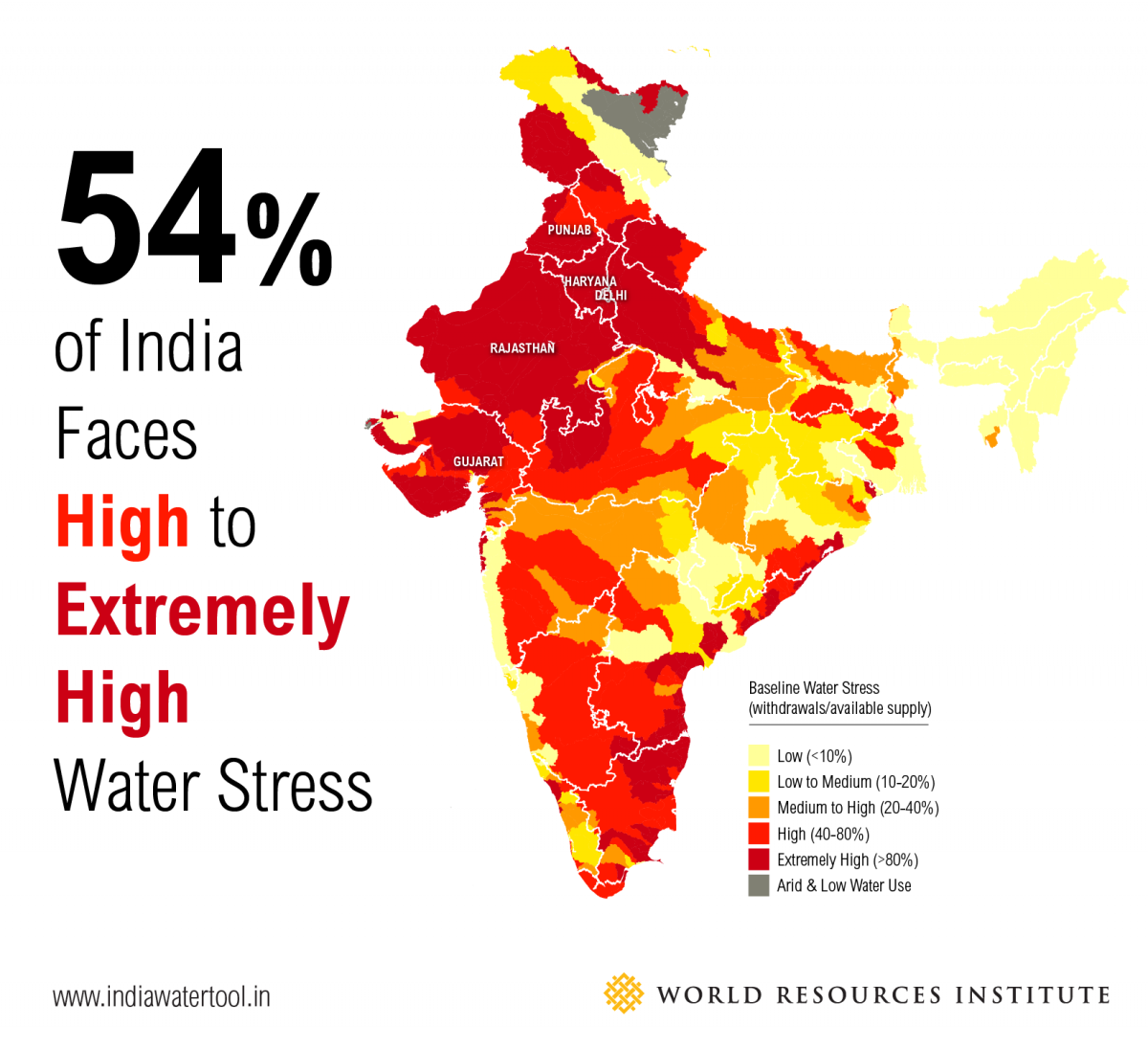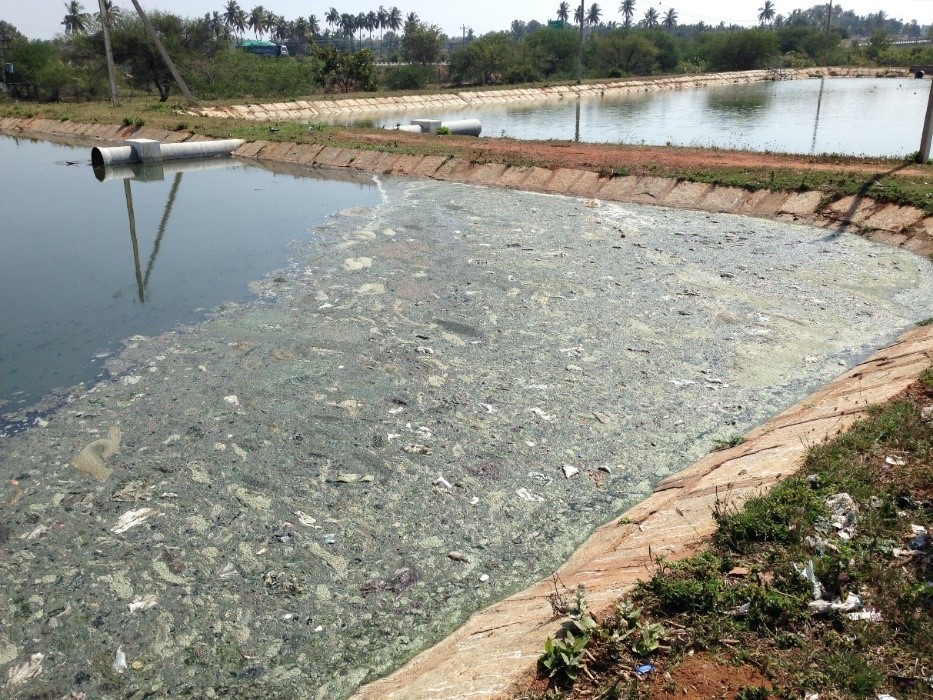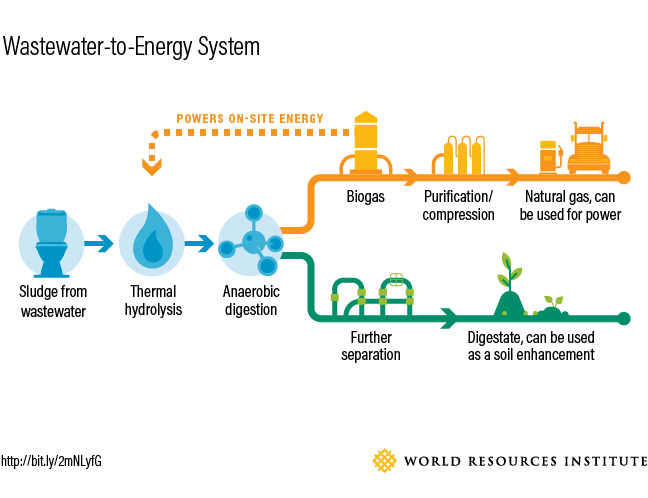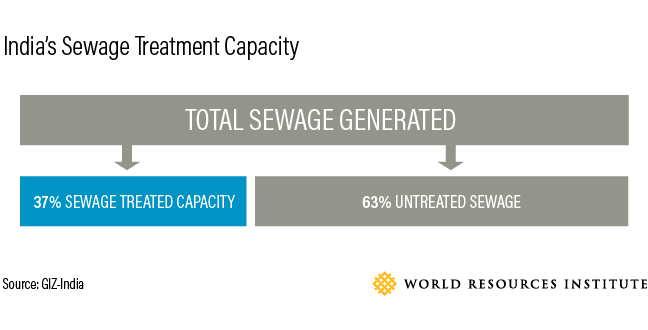From Waste to Watts: How Sewage Could Help Fix India's Water, Energy and Sanitation Woes
by e -
This blog post originally appeared on Insights.
As India’s summer intensifies, many states are already in the midst of a drought—and the hottest days have yet to arrive. At the same time, water-intensive agriculture, rapid urban expansion, increases in industrial activity and growing energy production are driving the country’s water demand upward. More than half of India is now considered severely water stressed.

Part of the problem is that India still manages its water as an infinite resource on a linear model of withdrawal, consumption and disposal. But a more efficient management model is to look at water from a “circular economy” perspective. Water’s usability doesn’t need to end once it washes down the drain. Rather, we can see industrial and domestic wastewater as a valuable resource from which usable water, nutrients and even renewable energy can be extracted.
Reusing Wastewater through Sludge-to-Energy Plants

Sludge-to-energy systems can make the dream of a circular economy a reality by turning waste into an input, instead of just an output. These systems can be developed as independent, decentralized units that require minimal outside energy for operations. From raw sewage, they generate three useful products: energy, digestate and water that can be reused for agriculture, industry and even domestic uses such as watering gardens and flushing toilets.
Here’s how it works: Wastewater treatment plants first separate sewage into solid “sludge” and liquid water. This methane-rich sludge then undergoes two processes—thermal hydrolysis and anaerobic digestion—to quickly and efficiently remove pathogens and harness biogas. The resulting biogas can then be used as on-site energy to power the wastewater treatment plant, or can be purified further and sold as natural gas. In addition, the solid digestate left over after anaerobic digestion can be used to enhance soil. (However, the presence of certain heavy metals in the digestate, can make it unsuitable for land applications.)

A plant’s financial needs and the technical capacities of its operators can inform which kind of sludge-to-energy technology and system is chosen, and they can be installed in existing wastewater treatment plants, reducing the need for new infrastructure. This saves time, space and money.
A Win-Win for India
Sludge-to-energy systems can also help in another way. India’s urban populations have grown so drastically that sewage treatment systems cannot keep up with the amount of human waste being generated. There are only enough treatment systems in India to treat 37 percent of the country’s sewage—and that’s if they were all operating at maximum capacity. In reality, even less than 37 percent of sewage is probably treated—the rest is often dumped in waterways or on land. Untreated sewage contains large concentrations of pathogens and other contaminants that can make people sick.

Despite emerging policies to deal with urban sanitation, there’s been limited uptake of traditional wastewater treatment facilities due to barriers such as high installation and maintenance costs, the large amount of energy required to run such units, and the need for trained technical staff. In addition, traditional facilities require large amounts of additional space in India’s already-dense urban areas. Non-traditional, smaller sludge-to-energy systems could overcome these barriers by selling natural gas and digestate for revenue, and by using biogas to meet energy needs on-site. Sludge-to-energy systems can help wastewater treatment become financially feasible, provide renewable energy and reduce greenhouse gas emissions—all while helping to meet India’s growing water and sanitation needs.
Implementing Sludge-to-Energy Systems in India
WRI India is currently leading research on the potential for implementing sludge-to-energy systems in Indian cities. Past WRI research found that sludge-to-energy systems in Xianyang, China would yield sizable economic, environmental and social benefits—can the same be said for cities in India? Our research in India will map the policy and institutional landscapes of the water and wastewater sectors, consider which designs and approaches match India’s needs, and identify the potential for such systems to increase resilience to water stress. By harnessing resources from wastewater, Indian cities may be able to simultaneously gain a clean source of water, energy and improved sanitation.


